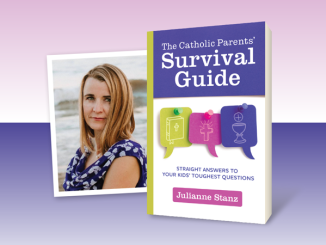
We start today a new series, in which I will explore six keys to making our faith formation experiences more evangelizing. We begin with the art of storytelling, which just happened to be Jesus’ favorite way of teaching!
“Tell me the facts and I’ll learn. Tell me the truth and I’ll believe. But tell me a story and it will live in my heart forever.” This Native American proverb captures the essence of the power of storytelling. Stories are effective because they are interesting, they are accessible, they convey meaning, they stress the initiative of God, they introduce “God-language,” they create images, they generate further storytelling, and they lead to insights and action and ultimately, to faith.
Storytelling creates what Christian author Nate Wilson refers to as “the aroma of the gospel.” An aroma, of course, is something that surrounds us, penetrates us, and lingers with us. To effectively create the “aroma of the gospel” through storytelling, we need to pay attention to several key elements.
- Prepare. To be a good storyteller, you need to do your homework. By all means, read the story (several times, in fact) ahead of time and enter it yourself, allowing it to speak to you and for you to get to know the story. Then, be sure to focus on the main point of the story that you wish to draw attention to. You may even consider recording yourself telling the story so that you can review it and make adjustments. Finally, the most powerful way to tell a story is to memorize it and tell it from memory instead of just reading it.
- Create a world. Like a video game that creates a world for players to enter, an effective storyteller creates a world for listeners to enter with their imaginations. Consider using props, sound effects, art, and music. Use your voice, facial expression, and body language to indicate different speakers in the story. Maximize your storytelling space by moving around, and include audience participation when possible.
- Use nonverbal communication. Some of the most effective storytelling is done through nonverbal expressions. Don’t just use your voice to tell a story; use your whole body! Think about your posture, how you use your eyes (making expressions and making eye contact with various participants), and how you move about the space.
- Use your voice as a tool. Storytelling is not just a matter of reading a story; you need to tell a story with your voice. That means paying attention to volume (rising and falling to create drama) as well as to pace, silence, pauses, and tone.
One more piece of advice: Do not begin a Scripture story with “Once upon a time…” That phrase will serve to trivialize what you are about to say and reduce it to a fairy tale. Just tell your audience that you are going to tell them a story, pause, and then launch into it. Likewise, do not say, “the end” at the conclusion of the story. Just speak the last line of the story and let it “sit there.”
We need to remember that many of those to whom we proclaim the Gospel are biblically illiterate. In other words, we cannot assume they know the stories of the Gospels. If, as the New Evangelization suggests, we are going to “re-propose” the Gospel to our culture, that will necessitate re-proposing Scripture stories themselves.
It’s important that we don’t stop there, however. It is not enough to tell the stories of what Jesus did in the past. We must continue to weave a narrative that our participants can enter—a narrative that continuously describes Jesus acting in the lives of his people down through the ages (which is why we tell stories of the lives of the saints!) and into the present day, including in our own lives. This means that we need to tell stories of what Jesus has done for us when we have experienced powerlessness, pain, emptiness, anxiety, despair, and so on, as well as how we have encountered him in moments of great joy—any experience that led to a significant transition in our lives.
If you and I are going to be more evangelizing catechists, we need to pause and ask ourselves, “What great things has Jesus done for me?” and then we need to tell those stories. Spend some time in prayer, asking Jesus to help you see the ways he has touched your life, transformed you, and healed you. And then, ask him to help you tell your story and to invite others to get in touch with their own stories.
—Adapted from Preparing Hearts and Minds: 9 Simple Ways for Catechists to Cultivate a Living Faith
Achieve a more evangelizing faith formation experience for young people with Finding God: Our Response to God’s Gifts.




Great post!